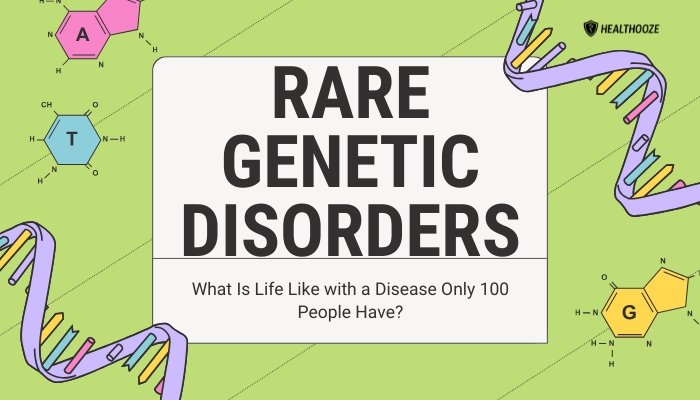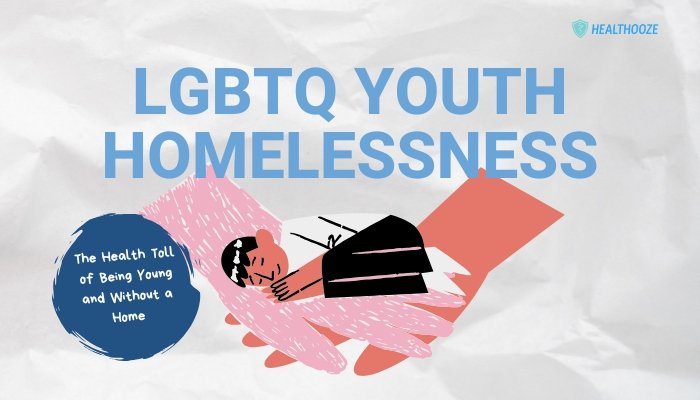Introduction
Primary immunodeficiencies, also known as primary immune deficiencies (PIDs), are a group of genetic disorders where part of the immune system fails to function properly.
Although individually rare, collectively these disorders affect hundreds of thousands of people worldwide. Patients with a primary immunodeficiency often endure repeated, severe infections from an early age, leading to missed school or work, multiple hospitalizations, and potential organ damage.
Yet, many remain underrecognized. For families, obtaining a timely diagnosis can feel like searching for answers in a medical maze, while children and adults endure persistent illnesses that do not respond to ordinary treatment.
This article explores the key features of primary immunodeficiencies, explains how they arise, and outlines strategies to diagnose and manage them effectively. By acknowledging the signs and leveraging modern medical solutions such as gene therapies or immunoglobulin replacement, we can ensure that people with these lifelong conditions receive the care and support they deserve.
Defining Primary Immunodeficiencies
What Are Primary Immunodeficiencies?
In a healthy immune system, specialized cells and proteins recognize and destroy invading pathogens such as bacteria, viruses, and fungi. With primary immunodeficiencies, genetic mutations disrupt these defense mechanisms from birth, making it harder or impossible for the body to fight infections effectively. More than 450 forms of PIDs exist, each with distinct genetic causes and clinical presentations.
Common Subtypes
- Severe Combined Immunodeficiency (SCID)
- Sometimes called “bubble boy disease,” SCID involves profound defects in T cells (and sometimes B cells). Infants are highly susceptible to opportunistic infections and require urgent therapy, often bone marrow transplant.
- Common Variable Immunodeficiency (CVID)
- Typically diagnosed in older children or adults due to low immunoglobulin levels and recurrent respiratory infections.
- Chronic Granulomatous Disease (CGD)
- A defect in phagocytes that prevents them from killing certain bacteria and fungi. Frequent granuloma formation, leading to organ complications.
- Selective IgA Deficiency
- Marked by absence or severe reduction of Immunoglobulin A, occasionally asymptomatic but can correlate with frequent infections or autoimmune diseases.
Genetic Landscape
Though some immunodeficiencies follow X-linked inheritance (e.g., X-linked agammaglobulinemia), others are autosomal recessive or autosomal dominant. Each subtype’s pattern of inheritance can guide genetic counseling and family planning.
Key Warning Signs and Diagnosis
Recognizing Symptoms
Frequent, severe, or unusual infections often serve as a red flag. Specific patterns include:
- Multiple ear or sinus infections in a year
- Recurrent pneumonia or bronchitis
- Opportunistic pathogens (e.g., Pneumocystis jirovecii) rarely seen in healthy individuals
- Failure to thrive in children, especially those with SCID or other severe forms
Although repeated infections raise suspicion, mild immunodeficiencies can remain hidden until adolescence or adulthood.
Diagnostic Pathways
- Blood Tests
- CBC (Complete Blood Count): Checking absolute lymphocyte or neutrophil counts for obvious abnormalities.
- Immunoglobulin Levels: Measuring IgG, IgA, IgM, and subtypes; low levels suggest humoral immunity problems.
- Functional Assays
- B-Cell/T-Cell Function Tests: Evaluate how immune cells respond to challenges, like vaccine antigens.
- Phagocyte Oxidative Burst Test: For diagnosing CGD by analyzing how neutrophils produce reactive oxygen species.
- Genetic Sequencing
- Identifies specific mutations, aiding in targeted therapy decisions and providing information for family genetic counseling.
Delays in Diagnosis
Mislabeling frequent infections as “bad luck” or attributing them to childcare settings might postpone specialist referral. For mild forms (e.g., selective IgA deficiency), patients can remain unaware until an unrelated test unveils anomalies. Early detection is vital to reduce organ damage and infection-driven complications.
Impact on Patients and Families
Physical Toll
Persistent chest infections can cause irreversible lung scarring, while chronic GI infections or autoimmune complications hamper general well-being. Severe forms like SCID, if untreated, can lead to life-threatening infections within the first year of life.
Emotional Strain
- Fear of Exposure: Tendency to avoid crowds or public spaces due to infection risk, isolating patients socially.
- Anxiety and Depression: Constant worry about next infection or hospital stay can burden mental health.
- Healthcare Fatigue: Repeated intravenous antibiotics, hospital admissions, or complicated regimens weigh heavily on daily life.
Economic and Educational Disruptions
Frequent medical appointments or episodes of severe illness can reduce school attendance, hamper job stability, or lead to high out-of-pocket costs for advanced therapies. In resource-poor areas, accessing consistent care proves even more challenging.
Current Treatments and Management
Infection Control
Prophylactic Antibiotics
- Low-dose antibiotics or antifungals can stave off recurrent infections.
Immune Augmentation
- Immunoglobulin Replacement Therapy (IGRT)
- Used in conditions like CVID or X-linked agammaglobulinemia; intravenous or subcutaneous Ig infusions supply missing antibodies.
- Helps reduce infection frequency and severity.
- Cytokine Therapies
- In certain T-cell or granulocyte dysfunction, cytokines like interferon gamma might boost immune function.
Curative and Cutting-Edge Interventions
- Bone Marrow/Stem Cell Transplants: Potentially curative for SCID and select severe immunodeficiencies by giving the patient healthy donor immune cells. Success depends on finding a compatible donor and performing the transplant early.
- Gene Therapy: Emerging trials use viral vectors or CRISPR to correct underlying genetic defects in the patient’s hematopoietic stem cells. This approach shows promise but remains complex and costly.
- Vaccinations: Carefully administering inactivated vaccines (when safe) can provide partial protective coverage.
Supportive Care
- Nutrition and Lifestyle: Balanced diet, adequate sleep, stress management, and mental health therapy reduce inflammation and support overall well-being.
- Infection Vigilance: Prompt action at first symptom (fever, respiratory changes) helps prevent severe complications.
- Specialized Clinics: Many high-income countries have immunology centers offering integrated care—combining pulmonology, infectious disease, and immunology services under one roof.
Why PIDs Are Underrecognized
Low Awareness
Doctors may not always suspect a rare immune defect when encountering recurrent ear infections or pneumonia. Families can attribute frequent colds to “bad luck,” delaying specialist referrals. Meanwhile, public knowledge about PIDs remains overshadowed by more common autoimmune or immunological conditions.
Complexity and Varied Presentation
Each immunodeficiency can present differently, complicating diagnosis. Even among siblings, the same mutation might manifest mild vs. severe symptoms, stumping standard protocols.
Resource Shortages
In developing nations, minimal labs or specialized staff hamper advanced immunological testing. Patients might never be tested for immunoglobulins or T-cell function, thus never receiving a formal diagnosis or appropriate therapy.
Hope on the Horizon: Ongoing Research
Genetic Advances
- Exome and Genome Sequencing: Cheaper next-generation sequencing allows comprehensive, rapid analysis of suspicious gene variants, clarifying subtypes and fueling targeted interventions.
- Biologic Drugs: Agents modulating the immune response help manage specific immunopathies, including monoclonal antibodies or checkpoint inhibitors.
International Collaborations
Global networks such as the Jeffrey Modell Foundation or the International Patient Organization for Primary Immunodeficiencies (IPOPI) speed progress by connecting researchers, clinicians, and families. Pooling patient data fosters multi-center trials, bridging knowledge gaps.
Broadening Screening
Some countries now incorporate SCID testing in newborn screening panels, leading to earlier lifesaving interventions. As technology evolves, it’s conceivable that more PIDs will be added to newborn screens, dramatically enhancing early detection rates.
Empowering Patients and Caregivers
Emphasizing Early Detection
Routine suspicion in cases of repeated severe infections, alongside robust lab tests, ensures timely diagnosis. Pediatricians and general practitioners should consider immunodeficiency for any child or adult with abnormal infection patterns.
Advocacy and Education
- Patient Support Communities: Provide practical tips, emotional backing, and shared experiences.
- Continuing Medical Education: Healthcare providers can attend immunology seminars, e-learning modules, or conferences to keep pace with PIDs’ new treatments and guidelines.
Approaches to Lifestyle and Self-Care
- Preventive Measures: Good hygiene, avoiding contact with sick individuals, and up-to-date immunizations where safe.
- Mental Health: Professional counseling or stress-reduction techniques help manage the psychological toll of chronic illness.
- Holistic Family Involvement: Siblings, partners, or friends stepping in to lighten daily burdens and ensure continuity in medication or therapy routines.
Conclusion
Primary immunodeficiencies, while rare individually, collectively affect millions across the globe. They can leave patients vulnerable to relentless infections, organ damage, and emotional strain—especially if diagnosis is delayed. Yet, modern medical progress, from advanced diagnostic technology to gene-based therapies, offers renewed hope for early intervention and even cures for select PIDs. Equally vital is raising public and professional awareness, so repeated infections or unusual presentations prompt further investigation rather than acceptance as “just bad luck.”
By encouraging comprehensive immunological testing, investing in research, and fostering supportive networks, healthcare systems can better serve those born with weaker immune defenses. For individuals living with these conditions, greater understanding and timely care lead to improved longevity and a fulfilling quality of life—a testament to the difference accurate diagnosis and empathy can make.
References
- Notarangelo LD, Fleisher TA. Targeted immune evaluation and gene sequencing in suspecting immunodeficiency. J Allergy Clin Immunol. 2019.
- Picard C, Al-Herz W, Bousfiha A, et al. Primary immunodeficiency diseases: an update on the classification from the IUIS. J Clin Immunol. 2020.
- Al-Herz W, et al. Primary immunodeficiency diseases worldwide: an overview. Ann N Y Acad Sci. 2021.
- http://www.info4pi.org/
- Cunningham-Rundles C, Ponda PP. Chronic immunodeficiency in adults. N Engl J Med. 2005.







